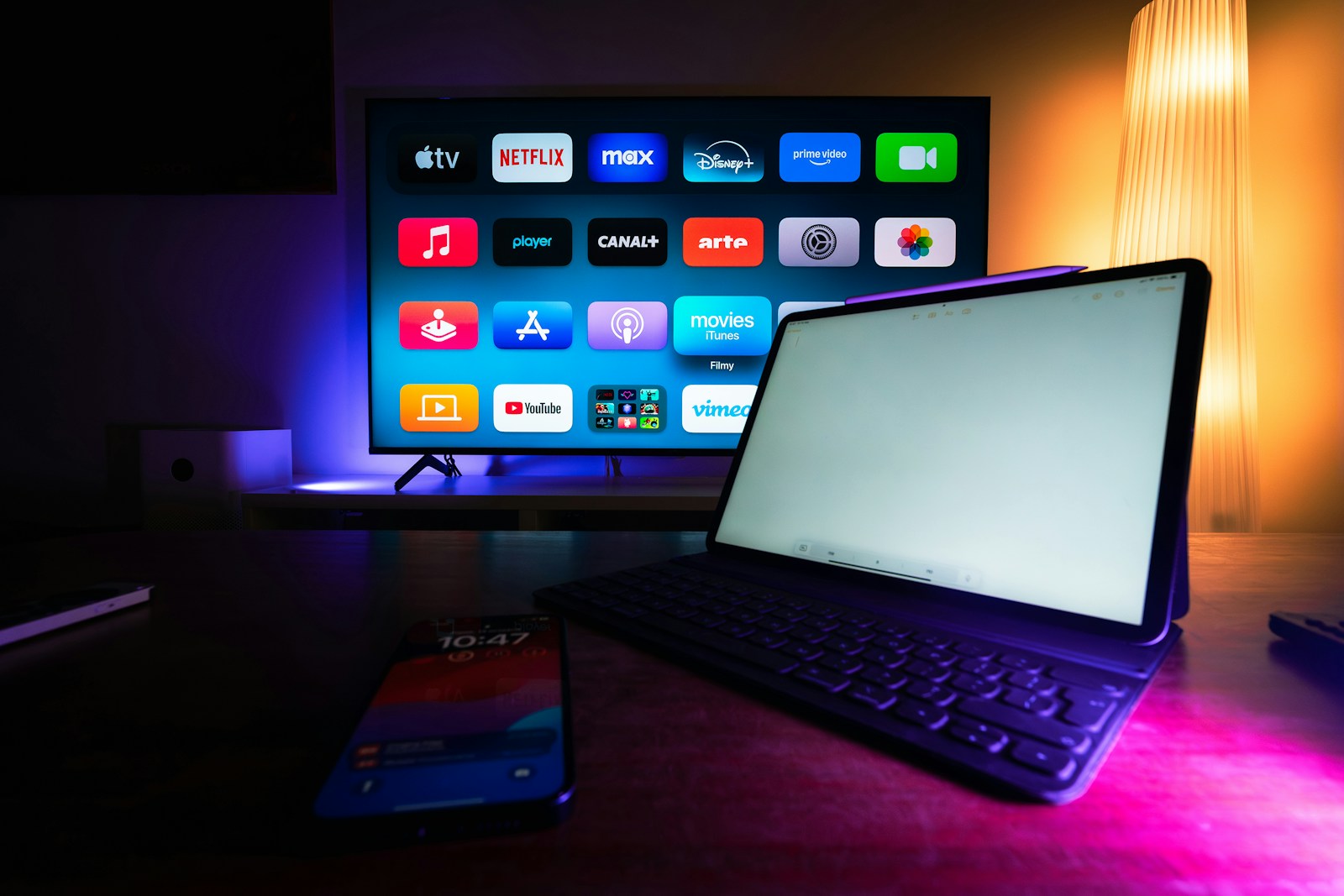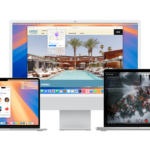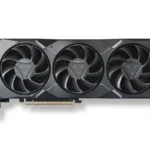Turning your PC into a home theater can greatly improve your entertainment experience. You’ll be able to watch movies, stream content, and enjoy high-quality audio from home. Here’s how to set up a home theater PC (HTPC):
A home theater PC combines the power of a computer with the fun of a home theater system. With a PC setup, you can watch movies, play games, and stream content on your big screen TV. Many people like to build their own home theater PCs. This way, they can choose every part and feature. Others prefer to buy pre-made systems that work right out of the box. Either option can enhance your entertainment setup.
A good home theater PC turns your living room into a media hub. You can store all your movies and shows in one place. You can also browse the web, check email, or work from your couch. With the right parts, your PC can support 4K video and advanced gaming too.
Integrating Your PC Into a Home Theater System
1. Choose the Right PC
Your PC should have:
- A powerful processor (CPU): Intel Core i5/i7 or AMD Ryzen 5/7 for smooth performance.
- Good graphics (GPU): A dedicated GPU (e.g., NVIDIA GeForce RTX 3060 or AMD Radeon RX 6600) for 4K playback.
- Adequate RAM: At least 8GB (16GB recommended for smooth multitasking).
- Storage: SSD for fast performance and an HDD for storing media files.
- Cooling System: Keep temperatures low for silent operation.
2. Optimize Your Display Setup
- Connect to a TV or Projector: Use an HDMI cable for high-quality video and audio.
- Adjust Display Settings: Set your TV resolution to 4K or 1080p in Windows Display settings.
- Enable HDR: If your TV supports HDR, enable it in Windows settings (Settings → Display → HDR).
3. Enhance Audio Quality
- Surround Sound Setup: Connect your PC to a home theater receiver via HDMI or an optical audio cable.
- External Speakers & Soundbar: Use a Dolby Atmos or DTS:X sound system for a cinematic experience.
- USB DAC or Sound Card: For better audio quality, use an external digital-to-analog converter (DAC) or a high-end sound card.
4. Install a Media Center Software
To manage and play media efficiently, install:
- Kodi (Best for organizing and streaming local and online content)
- Plex (Stream and organize media across devices)
- VLC Media Player (Plays all formats without extra codecs)
5. Streaming Services & Apps
Install apps for:
- Netflix, Hulu, Disney+, Amazon Prime Video
- YouTube, Spotify, Tidal (for music)
- Steam Big Picture Mode (for gaming on your home theater setup)
6. Set Up a Wireless Remote Control
- Smartphone Apps: Unified Remote, Kodi Remote, or Plex Remote.
- HTPC Remote Control: Wireless keyboard with a trackpad or a dedicated media center remote.
- Voice Control: Use Alexa, Google Assistant, or Cortana for hands-free operation.
7. Optimize Network & Internet
- Wired Ethernet: Use a wired connection for smooth 4K streaming.
- Wi-Fi 6 Router: Ensures strong and fast wireless performance.
- NAS (Network-Attached Storage): Store and stream media locally without buffering.
8. Gaming Integration (Optional)
- Steam Link or NVIDIA GameStream: Stream PC games to your TV.
- RetroArch or Emulators: Play classic console games.
- Game Controllers: Connect an Xbox or PlayStation controller for a console-like experience.
9. Smart Lighting & Ambience
- Smart LED Light Strips: Sync Philips Hue or Govee lights with your screen.
- Bias Lighting: Reduces eye strain and enhances contrast.
- Projector Screen or Blackout Curtains: Improves viewing quality in bright rooms.
10. Automate the Experience
- HTPC Power Management: Set your PC to sleep or wake with a remote.
- Streaming Macros: Use AutoHotkey to automate tasks like launching apps with one button.
- Custom Skins & Themes: Customize Kodi or Plex to match your style.
Key Takeaways
- Home theater PCs combine computer power with big screen entertainment
- You can build your own HTPC or buy a pre-made system
- A good HTPC can handle 4K video, gaming, and more
Planning and Components for Your PC Home Theater
Building a PC home theater requires careful planning and the right parts. A well-designed system can give you amazing visuals and sound for movies, shows, and games.
Choosing the Right Hardware
The heart of your PC home theater is the hardware. Pick a strong CPU like an Intel Core i5 or AMD Ryzen 5. These chips can handle 4K video and high-end audio. Add a good graphics card for smooth playback. NVIDIA or AMD cards work well.
Get at least 8GB of RAM. More is better if you plan to run many apps at once. For storage, use a mix of SSD and hard drives. A 256GB SSD can hold your OS and main apps. Add a 1TB or larger hard drive for your media files.
Choose a case that fits your space. Small form factor cases are great for tight spots. Make sure it has good airflow to keep things cool. Pick a power supply that can handle all your parts. A 500W unit is often enough.
Operating System and Software Essentials
Windows is a popular choice for home theater PCs. It works with most hardware and software. Install the latest version for the best features and security.
Add media center software to manage your files. Kodi and Plex are top picks. They let you sort and play your movies, shows, and music. Both have nice menu systems that work well on TVs.
Get VLC media player too. It can play almost any video file type. For streaming, add apps for services like Netflix, Hulu, and YouTube. Many of these have Windows versions made for TVs.
Understanding Home Theater Connectivity
Hooking up your PC to your home theater is key. Use HDMI for the best video and audio quality. Most modern TVs and receivers have HDMI ports. If your PC lacks HDMI, use a DisplayPort to HDMI adapter.
For sound, HDMI can carry high-quality audio to your TV or receiver. If you need more options, use optical or coaxial cables. These can connect to many sound systems.
Make sure your PC has good Wi-Fi. A strong signal lets you stream without lag. For the best speed, use an Ethernet cable if possible. This gives you a direct link to your router.
Optimizing the Home Theater Experience
A great home theater setup combines quality hardware with smart tweaks. The right gear and settings can transform your viewing.
Integrating Peripherals and Accessories
A good remote is key for easy control. Look for one that works with your TV, sound system, and streaming devices. Wireless keyboards let you type easily when needed.
For gaming, connect an Xbox or other console. Add a Blu-ray player if you like physical discs. A soundbar can boost audio without a full speaker system.
Make sure you have enough HDMI ports. An HDMI switch lets you add more devices. Use high-speed HDMI cables for 4K video.
Visual and Audio Enhancements
Calibrate your TV’s picture settings. Adjust brightness, contrast, and color to match your room. Turn on game mode to reduce lag when playing.
For movies, use the Blu-ray or streaming app’s HDR settings if your TV supports it. This gives better colors and contrast.
Set up your sound system properly. Place speakers correctly for surround sound. A subwoofer adds depth to bass.
Use room EQ software to tune audio to your space. This fixes issues caused by room shape.
Maintaining an Ideal Setup
Keep your gear clean and cool. Dust can cause overheating. Use a surge protector to guard against power spikes.
Update your devices regularly. New firmware can fix bugs and add features.
Check your cables now and then. Loose connections can cause problems.
Think about lighting. Dim lights or blackout curtains reduce glare. Bias lighting behind the TV can ease eye strain.







